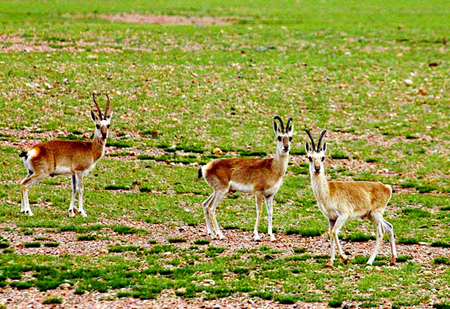Chinese zoologists have set up a wildlife research site in the altitude-4600 meters plateau of Qinghai, the highest in the country, an official with the Hol Xil Natural Reserve Administration said on Saturday.
 |
|
The Hol Xil Nature Reserve in Qinghai Province |
The site, jointly set up by the Institute of Zoology under the Chinese Academy of Sciences(CAS) and the Administration, was located in Wudaoliang wildlife protection station, where Tibetan antelopes cross Qinghai-Tibet railway during annual migration.
"The site is expected to attract more researchers to the area with its better technical and logistic support," said Cega, director of the Administration.
According to the official, more infrastructure and research facilities would be sent to the site to make research work more convenient.
Scientists from CAS were expected to carry regular research on the breeding of rare animals and human activities' impact on wildlife in the future, he added.
Locals would help the scientists to carry out patrols and observations based on scientific purposes, the official said.
The establishment of the site would upgrade the protection work of local wildlife including rare animals such as the Tibetan antelope and better preserve local ecological harmony, he said.
Research work had been conducted in the past three years with CAS scientists' visit to the region from June to November each year.
Cega said more than four scientists would come to the region each year for a stay of five month.
The Tibet-Qinghai Plateau is the habitat of Tibetan antelopes, a rare species exclusive to China and recognized as an endangered species since 1979. The nimble, athletic animal was selected as Fuwa Yingying, a mascot for the Beijing Olympics.
However, the antelopes became a target of poachers during the 1980s. International traffickers make shahtoosh shawls, a luxury pashmina product that requires the pelts of three to five Tibetan antelopes to make one.
(Xinhua News Agency August 2, 2008)